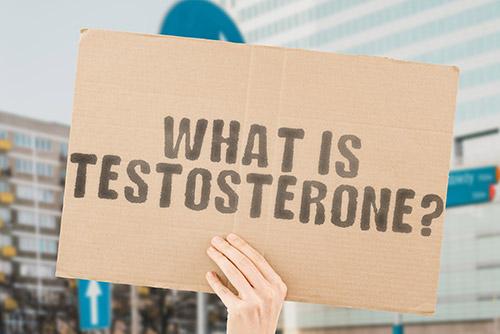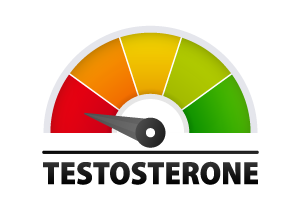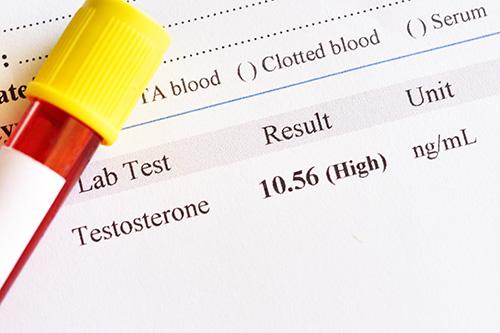Testosterone Blood Test
Testosterone is a crucial hormone in males and females, affecting sex-drive, energy, mood, fertility, muscle mass and metabolic health.
Our Testosterone Blood Test is a simple blood test you can take at home and send to our lab for analysis to check your testosterone levels.
Comes with our
- Results and doctor's report in 2 days or less
- Free, next-working day delivery
- Optional "free testosterone" test upgrade
Personalise your test
Testosterone Blood Test base price:
£35.00Finger-prick blood collection
Total price:
£35.00
Don't just take our word for it
At Selph, we've helped thousands of people feel better today and live longer tomorrow.
Kay
“Great service gives you quick results very detailed and therefore piece of mind. Would definitely recommend to others.”
Five Star ReviewMartin Naylor
“Good service with speedy results and cheaper than the direct competitors I found. Peace of mind or the chance to act early.”
Five Star ReviewLisa
“Ordered a Stool Sample test for myself and a PSA test for my husband. We posted the tests back the day after we received them and got the results by email the following evening. Very good service and the results have put both our minds at rest.”
Five Star ReviewWhat you need to know about our Testosterone Blood Test
Testosterone is a crucial hormone for both men and women. Although women produce less testosterone than men, they still make three to four times as much testosterone as oestrogen.
Low testosterone is common and can cause reduced sex-drive, low energy, infertility, low muscle mass and poor metabolic health. High testosterone can also be a problem in women and is associated with excess hair growth, acne and voice deepening.
What is testosterone?
Testosterone is the main androgenic sex hormone in both men and women. In men, testosterone is produced in the testes in response to stimulation by luteinising hormone from the pituitary gland. In women, most testosterone is produced from the adrenal glands though some also comes from the ovaries.
In both men and women, testosterone plays a role in sex-drive, energy, fertility, muscle mass and metabolic health.
What's the difference between total testosterone and free testosterone?
Total testosterone measures the total concentration of testosterone in the blood. However, most testosterone is actually bound to proteins in the blood (mainly albumin and sex hormone binding globulin) which inactivates it. We can account for this to calculate the amount of "free" testosterone which is actually available for your body. This is a more accurate measure of testosterone status than measuring total testosterone alone.
What causes low testosterone levels?
Testosterone levels fall naturally in both men and women from about 30 years of age. However, about 1-in-4 men over the age of 40 have low testosterone levels for their age. This can be caused by:
- Obesity
- Stress
- Poor sleep
- Too little exercise (particularly resistance training)
- Smoking and alcohol
- Diabetes
- Steroid use
- Injury to the testes
- Pituitary problems, including pituitary tumours
What are the symptoms of low testosterone?
Symptoms of low testosterone include:
- Erectile dysfunction (in men)
- Low sex-drive
- Lack of energy
- Low mood
- Infertility
- Difficulty building muscle
- Poor metabolic health - high cholesterol and poor sugar-handling
What are the symptoms of high testosterone?
High testosterone levels aren't usually a problem in men but they can cause issues in women. The main causes of elevated testosterone in women are polycystic ovarian syndrome (PCOS) and testosterone replacement therapy. Symptoms of high testosterone levels in women include:
- Acne
- Excessive hair growth - e.g. facial hair
- Deepening of the voice
- Infertility
What do my testosterone test levels mean?
Testosterone levels are different in men and women.
For men:
| Total Testosterone level (nmol/L) | Meaning |
| <8 | Very low testosterone - likely to benefit from testosterone replacement therapy |
| 8 - 12 (or 8 - 14 if pre-diabetic / diabetic) | Borderline low testosterone - may benefit from testosterone replacement therapy |
| >12 (or >14 if pre-diabetic / diabetic) | Normal |
For women:
| Total Testosterone level (nmol/L) | Meaning |
| <0.3 | Low |
| 0.3 - 1.8 | Normal |
| >1.8 | High |
What's tested in your testosterone test?
Total Testosterone
Testosterone is the main androgenic sex hormone in men and women.
Testosterone Blood Test FAQs
In order to make your Testosterone Blood Test as accurate as possible, it’s important to prepare for it by:
- taking your blood sample between 6am and 10am.
- avoid taking a finger-prick sample from fingers that have been used to handle hormone gels/pessaries/patches in the past 4 weeks.
Testosterone levels peak in the morning so it's best to take your Testosterone Blood Test between 6am and 10am, when testosterone levels are at their highest.
Yes, our Testosterone Blood Test is ideal to monitor your testosterone levels if you are taking testosterone replacement therapy (TRT).
However, please avoid taking blood from fingers that have handled testosterone patches, tablets, gels or pessaries in the four weeks before testing, unless you were wearing gloves. Testosterone will stay in your skin and give a falsely high measurement.
Yes, both men and women can take this Testosterone Blood Test. Women actually have three to four times as much testosterone as oestrogen and it plays an important role in energy, libido, muscle mass, fertility and metabolic health. Women are most at risk of low testosterone after the menopause and testosterone replacement therapy has a role alongside traditional hormone replacement therapy (GRT).
Before the menopause women may also have problems because of high testosterone levels associated with conditions such as polycystic ovarian syndome (PCOS) which can cause irregular periods, infertility, acne and unwanted hair growth.
When we report testosterone results, we put testosterone levels into the appropriate reference ranges for men and women.
Still have questions?
If you have any questions, we're here to help. Our customer service team is hands-down the best you'll ever deal with. They're smart, friendly, knowledgeable and will get back to you in a flash.
We've got the stats to back it all up.
When it comes to health, you want to know you’re in safe hands. We’ve got decades of experience, and we’ve got the stats to prove it.
20+
Years in healthcare
65,000+
5 star reviews

1 million+
Happy customers
2 million+

Our Privacy Promise
Your health is yours. It's personal. That's why we're committed to keeping your data safe and secure. Here's how we do it:
- We use anonymous packaging.
- Only the analyses you request are performed on your samples.
- Your GP won't see your results unless you want them to.
- Your data are safe from insurance companies.
See our Privacy Policy and our Terms of Service for more info.








